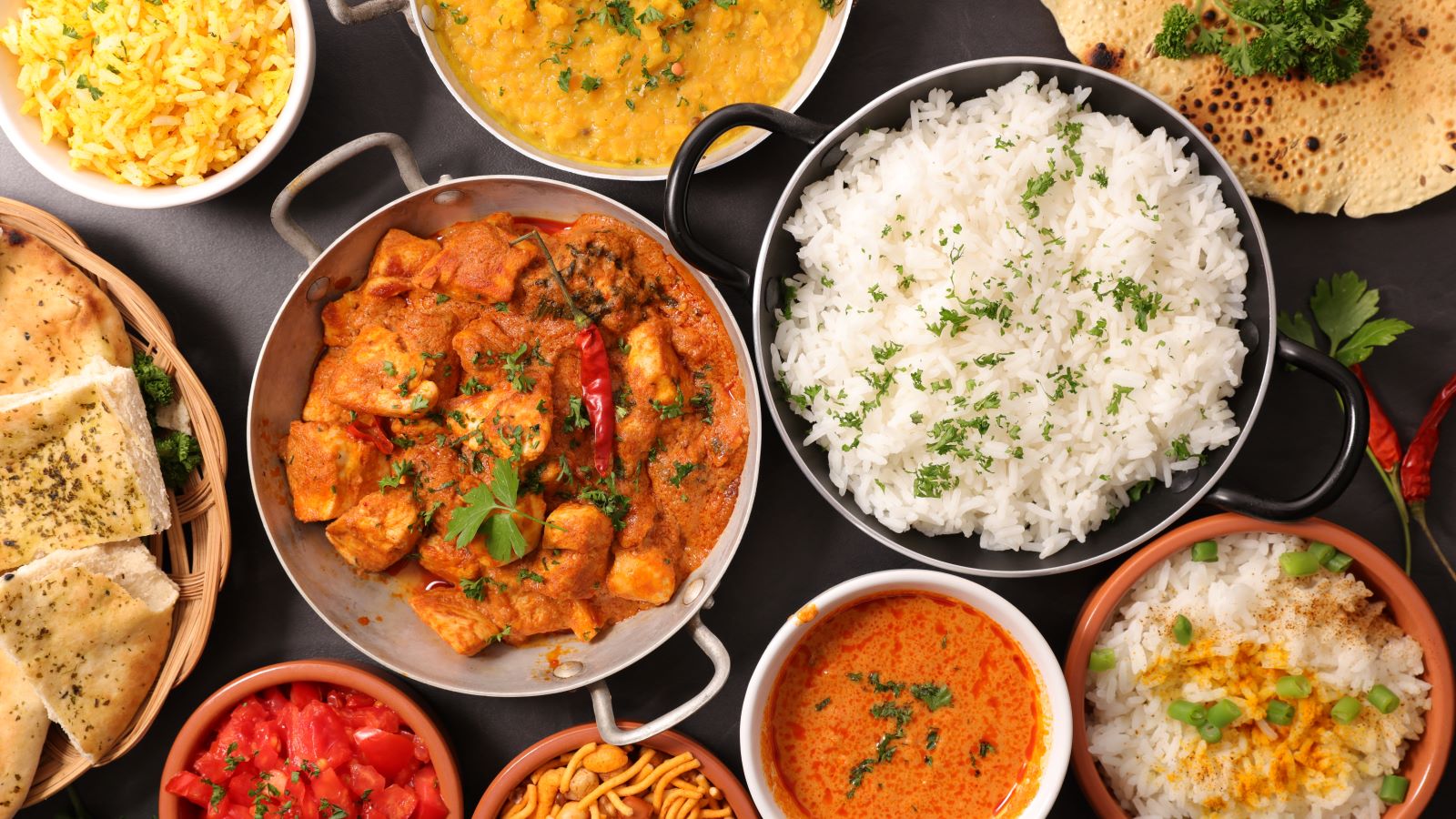<< Back
8 Tips to Eat Healthy at an Indian Restaurant

April 01, 2025
Indian food is full of flavor and tradition. And loaded with spices and healthy ingredients, it can be a great option for a healthy meal.
But like any cuisine, some dishes are better than others. That’s why we asked Ulysses Wu, MD, chief epidemiologist for Hartford HealthCare, for expert advice to navigate the menu at your favorite Indian restaurant.
1. Opt for grilled instead of fried.
Indian cuisine offers popular deep-fried appetizers or sides like samosas, pakoras and vadas – but these can quickly add calories and unhealthy fats to your meal.
Instead, look for grilled dishes like tandoori chicken or vegetables.
“Tandoori cooking uses a clay oven and minimal oil, making it an excellent choice,” says Dr. Wu. “Grilled meats, especially marinated in yogurt or spices, are a great way to enjoy Indian food without the added fat.”
> Related: 3 Tips for Limiting Sodium at Fast Food Restaurants
2. Look for lentils.
Lentils are a staple in Indian cuisine, and are a powerhouse of protein and fiber.
Dal, a lentil-based curry, is a great choice for anyone looking to add more plant-based protein to their diet.
“Dal is high in vitamin B6, folate and iron,” says Dr. Wu. “It supports digestion and energy levels, and the fiber and protein will keep you feeling full longer.”
> Related: 7 Protein-Packed Foods to Add to Your Diet
3. Or chickpeas.
A similar dish, chana masala, is another healthy option.
“Chickpeas are rich in protein and fiber, which helps regulate blood sugar and improve digestion,” says Dr. Wu.
And the tomato-based sauce is lower in both fat and calories than a traditional, cream-based curry. Cooked tomatoes also contain lycopene, a powerful antioxidant.
4. Balance spice with raita.
Not all Indian food is spicy – but it certainly can be.
But asking for raita on the side might help, and your gut will thank you for it.
“Raita is a yogurt-based sauce that can help cut the heat. It’s also packed with probiotics, which are important for gut health,” says Dr. Wu.
5. Don’t skip the vegetables.
Indian cuisine is a vegetarian’s dream, with almost all chicken dishes offering vegetarian substitutes.
“Vegetarian dishes will be lower in calories and fats, and offer more vitamins and minerals,” says Dr. Wu. “Look for dishes like baingan bharta (mashed roasted eggplant), which is high in antioxidants.”
Other vegetables like spinach, cauliflower and peas are often featured in Indian cuisine, and offer many heart-healthy benefits. But look out for hidden ghee and oil that add calories, saturated fats and cholesterol to many of these dishes.
> Want more health news? Text StartHere to 85209 to sign up for text alerts
6. Choose brown rice or whole wheat roti.
While white rice and naan (especially garlic naan!) are fan favorites, they tend to be high in refined carbohydrates.
“Whole grains, like brown rice and whole wheat bread, are higher in fiber and better for your overall health,” says Dr. Wu.
And unlike processed carbs, they won’t spike your blood sugar.
7. Watch out for creamy curries.
Bad news, butter chicken or tikka masala lovers.
“Dishes like butter chicken or tikka masala are cooked with rich, creamy sauces,” Dr. Wu cautions. “These tend to add a lot of saturated fat to your meal.”
If you’re craving these, ask for them to be made with less cream, or try a tomato-based curry instead.
8. Pay attention to serving sizes.
Indian meals are often served family style or in buffets, which can make it easy to overeat.
“Indian food is rich with flavor, so it’s tempting to eat more than you should,” says Dr. Wu.
To avoid overeating, try ordering a smaller portion or splitting a meal with someone else.
“I also like the 20 minute rule, where you simply wait 20 minutes to see if you are full before you resume eating,” Dr. Wu adds.
And you can always take home leftovers!